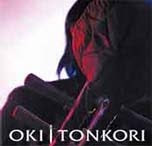 http://bibliodyssey.blogspot.com
http://bibliodyssey.blogspot.com
It is not clear which are the origins of Ainu people. There are many theories surrounding the origins of the Ainu, but the most popular is that the Ainu were descended from the Jomon people, a hunter-gatherer society who lived throughout Japan about 13000 years ago. They probably came from Siberia or from the southern Pacific. A Caucasian and mongoloid origin as also been proposed.
Ainu people were colonized by the Japanese until Meiji-era. The Ainu attempted several unsuccessfully revolts during the Edo period. Finally, they were forced to an assimilation process, being ordered to adapt to Japanese dresses, ethics and agriculture as well as they married with Japanese people. In addition, their lands were confiscated. The assimilation policies were so successful that nowadays almost nothing remains of the Ainu’s traditional way of life. The most of their traditional dresses, tools, and musical instruments are now only seen in museums.
http://blog.japundit.com/archives/category/japanese-history/.
There is not a national census of Ainu people that lives in Japan. The estimated number that identified themselves as Ainu is about 24,000, although probably there are more. Due to the intermarriage between Japanese and Ainu people, the number of pure blood type Ainu people is very small. Pure blood Ainu have physical characters that are quite different of the Japanese people. They have a larger eyebrows and nose than Japanese people. In addition, they have more body hair. In former times they used to wear a large beard and long hair.

In relation to the language, there are several theories of the origen of Ainu language: a Siberian (Altaic), southern Pacific, Caucasian and a mongoloid origin as been proposed. In addition, existed several dialects but with no system of writing. However, Ainu language has been transcribed to katakana and Russian cylliric. Nowadays, there are very few people (about 100), usually old people, that speaks their native language. In fact, it is endangered language, that it could extinct in the next generation. The Japanese recognize the Ainu as an ethnic minority in the 90’ decade. However, they still don’t have full indigenous rights and political representation. For more information about the Ainu people check the following webs:
http://www.everyculture.com/wc/Japan-to-Mali/Ainu.html
http://projectuepeker.blogspot.com/
http://www.workingdogweb.com/Ainu.htm
Early Ainu music was associated with festival singing and dancing, and was related with spirit deities (kamui) and animals such as the bear, whale, owl and the sea turtle. The playing of the musical instruments was used in the context of telling epics stories, praying, greetings, magic spells or just for enjoying themselves. Many songs are accompanied by hand-clapping alone, or the singers form a circle or perform a pantomimic dance (e.g. bird dance).
They may use a characteristic form of throat singing called “rekuhkara”: it is like a game that involves two women facing each other, with one forming a tube with her hands and chanting into the mouth of the her partner. The technique is essentially one where the "giver" provides the voice and the "receiver", holding her glottis closed, uses her vocal tract to modulate the sound stream http://en.wikipedia.org/wiki/Rekuhkara




The pictures of the singers, musicians and dancers were taken from a performance in The Ainu Museum in Shiraoi, Hokkaido. For the description of the instruments see the Page of Ainu Musical Instruments in this blog
References:
Chiba Nobuhiro. The music of Ainu. The Ashgate Research. Companion to Japanese Music. A. McQueen Tokita & David W. Hughes eds. Aldershot, Hampshire, England, 2008: 323-344.
Tanimoto Kazuyuki. Regional and Minority Music in Japan. Music of the Ainu, Nivkhi, and Uilta. The Garland Encyclopedia of World Music. Vol 7. East Asia: China, Japan and Korea. Robert C.Provine, Yosihiko Tokumaru and J.Lawrence Wiyzleben editors. Routledge. New York, 2002: 781-788.
In my visit to Hokkaido I noticed a strong revival of the Ainu culture http://www.japanfocus.org/-Chisato__Kitty_-Dubreuil/2589. I have to thanks to the staff of the tourist office in Yamagata, in the building Central Kajo http://www.yamagatakanko.com/english/index.html, who helped me to plan my travel to Hokkaido. There are so many places to visit in Hokkaido related with the Ainu Culture that is quite difficult to choose. In addition, some of them are a little far for foreign people who are short in time (I'm a catalan from Barcelona, Spain). The woman who kindly attended me, suggested to visit The Ainu Museum in Shiraoi, Hokkaido. To go there, take the train from Hakodate, Hokkaido to Nobosiberetsu (Sapporo Line), and then change train to Shiraoi. It is possible to visit in one day trip from Hakodate.







RECOMMENDED CD COMPILATIONS OF AINU SONGS

"Yukar, The Ainu Epic Songs". The Excellent Japanese World Music Library (WML) Series published this CD in 1997. It included two long yukar songs: one song is named "A duel with my Guardian God" and the other "Goldend Clogs". It was recorded in Nibutani, Japan. There is extensive english notes Now it's difficult to find. Some of WML albums now are beeing re-edited in Japan with different jackets and sometimes with bonus tracks. As far as I now this CD has not yet been re-edited.


This last CD I bought it in the Shop of the The Ainu Museum in Shiraoi, Hokkaido. There is no english transcription. There are 31 tracks. Most of them are oral explanations in Japanese. In was published in 2008 by The Japan Traditional Cultures Foundation.

 The author with the Manager of the The Ainu Museum in Shiraoi, Hokkaido.
The author with the Manager of the The Ainu Museum in Shiraoi, Hokkaido.
I am very grateful to Nomoto-San and Mizue-San for their help and kindness during my visit to the Ainu Museum in Shiraoi, Hokkaido

 Tonkori made by Nomoto-san
Tonkori made by Nomoto-san










